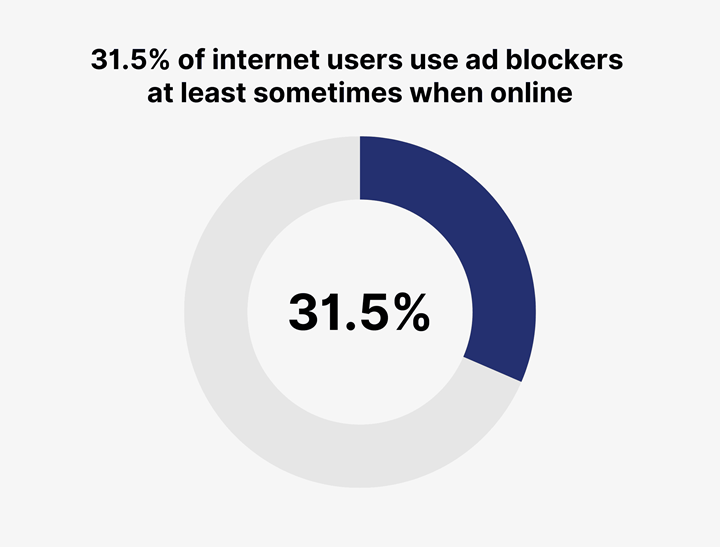
If you’ve been staring at your YouTube dashboard lately wondering why your views suddenly fell off a cliff, you’re not alone. Creators across the world have been raising alarms, speculating everything from bugs in the algorithm to YouTube’s new AI-driven age verification tools sneaking into the mix.
Well, YouTube has finally responded. And their answer isn’t as juicy as some hoped. In a post published this week, Team YouTube said, “Relax, Restricted Mode has nothing to do with your disappearing views.”
According to the company, Restricted Mode, that dusty old optional setting meant for schools and libraries, is barely used, hasn’t changed in years, and is definitely not powered by some sneaky AI switch. In other words, your views aren’t being stolen by age locks or algorithmic ghosts.
So, what’s the culprit? YouTube points fingers at a few suspects:
- Viewers returning to baseline after a viral spike.
- Seasonal habits, like the September slump when summer ends.
- Competition on-platform, because yes, viewers sometimes choose other videos (ouch).
- And the big one: ad blockers.
That last bit? That’s where things get interesting.
The Elephant in the Room: Ad Blockers
YouTube says that people using ad blockers can mess with reported view counts. As per Google:
Ad blockers and other content blocking tools/extensions can impact the accuracy of reported view counts. Channels whose audiences include a higher proportion of users utilizing such tools may see more fluctuations in traffic related to updates to these tools.And with a billion people worldwide now blocking ads, it’s hard to ignore. According to a 2024 report on Ad Blocker Usage and Demographic Statistics and recent Ad Blockers Usage Statistics [2025]:
- As of Q2 2023, 31.5% of internet users blocked ads, with the figure rising to 42.7% in 2025.
- Mobile ad blocking leads the way (54.4% of users).
- Kenya sits at 31.6% adoption, which is no small figure.

That means almost one in three of your viewers might be running an ad blocker. Globally, in places like Indonesia (40%), Vietnam (39%), and China (38%), creators are dealing with even bigger headaches. The problem? If an ad doesn’t show, YouTube might not count that view in the same way. Multiply that across hundreds of thousands of viewers, and suddenly your channel graph looks like a nosedive.
What Can Creators Actually Do About It?
YouTube’s official line was basically: “Don’t worry, everything’s fine.” But let’s be real. That’s not very helpful if your CPMs are tanking. So here are some practical, creator-first ideas that quickly come to mind based on the writing between YouTube’s lines:
1. Talk to Your Audience About Ad Blockers
Yes, it feels awkward, but viewers often don’t realize how much ad blockers hurt creators. A simple reminder at the start or end of your video, something like “Hey, if you enjoy my work, consider whitelisting my channel in your ad blocker”, can go a long way.
You’re not asking them to sit through every ad forever, just to make a small exception for you. Loyal fans will get it.
2. Diversify Content for Different Regions
Some regions have sky-high ad blocker usage (hello Indonesia at 40%). Others, like Ghana (10%), barely use them at all. If your analytics show you’re pulling a lot of views from heavy-blocker countries, maybe it’s time to tweak your content strategy. Create formats that resonate in regions with lower ad blocker penetration and lean on audience segments where ads still pull weight.
Below is a ranking of all 53 countries GWI studied in 2024, based on the share of internet users aged 16–64 who use ad blockers. Notice where Kenya is?
| Country | Usage rate |
|---|---|
| Indonesia | 40.0% |
| Vietnam | 39.1% |
| China | 37.6% |
| Hungary | 37.3% |
| Greece | 36.2% |
| Portugal | 35.4% |
| South Africa | 35.2% |
| Croatia | 35.0% |
| Poland | 34.3% |
| Israel | 33.8% |
| Taiwan | 33.8% |
| Norway | 33.4% |
| Russia | 33.2% |
| Malaysia | 33.0% |
| Spain | 32.5% |
| Sweden | 32.5% |
| Austria | 32.2% |
| USA | 32.2% |
| Canada | 32.0% |
| Germany | 32.0% |
| Brazil | 31.9% |
| Kenya | 31.6% |
| Egypt | 31.3% |
| France | 31.0% |
| Switzerland | 30.9% |
| Singapore | 30.7% |
| New Zealand | 30.4% |
| Bulgaria | 30.1% |
| Netherlands | 29.9% |
| Czechia | 29.8% |
| Australia | 29.7% |
| Hong Kong | 29.7% |
| Romania | 29.5% |
| Turkey | 28.6% |
| UK | 28.6% |
| Belgium | 28.5% |
| UAE | 28.0% |
| India | 27.6% |
| Morocco | 27.6% |
| Ireland | 27.0% |
| Italy | 26.8% |
| Saudi Arabia | 26.8% |
| Denmark | 25.9% |
| Argentina | 25.4% |
| Philippines | 25.3% |
| Chile | 24.8% |
| Nigeria | 24.6% |
| Thailand | 23.7% |
| Colombia | 22.8% |
| Mexico | 22.5% |
| South Korea | 21.3% |
| Japan | 15.8% |
| Ghana | 10.6% |
3. Build Beyond Ads: Subscriptions, Merch & Memberships
Let’s face it: relying solely on ads is like building a house on quicksand. With ad blockers becoming a default part of internet culture, creators need backup plans. That could mean:
- Launching channel memberships with exclusive perks.
- Offering Patreon-style subscriptions for superfans.
- Selling branded merch (done right, fans love it).
- Partnering directly with sponsors for baked-in deals.
Ad revenue may pay the bills, but direct audience support builds long-term sustainability.
Make no mistake. Ad blocking isn’t going away. Since 2012, usage has exploded from 44 million people to a billion today. People install these tools to dodge intrusive ads, save data, and speed up browsing. And they’re not about to uninstall them out of guilt.
| Date | Ad Blocking Users Worldwide |
|---|---|
| Q1 2012 | 44 million |
| Q1 2014 | 240 million |
| Q1 2016 | 558 million |
| Q1 2018 | 691 million |
| Q1 2020 | 764 million |
| Q4 2021 | 820 million |
| Q2 2022 | 716 million |
| Q4 2022 | 850 million |
| Q2 2023 | 912 million |
For creators, this means the landscape has changed. YouTube can reassure us that Restricted Mode isn’t eating our views, but the truth is simpler (and scarier): creators are competing not just with other videos, but with the ad-free experience viewers demand.
So, if your numbers are dipping, don’t panic. Instead, adapt. Be transparent with your audience, diversify your income streams, and learn where your viewers stand on the ad-blocking map. Because at the end of the day, the most reliable way to fight the ad-blocker problem is to build a community that values you enough to support your work, with or without the pre-roll.







